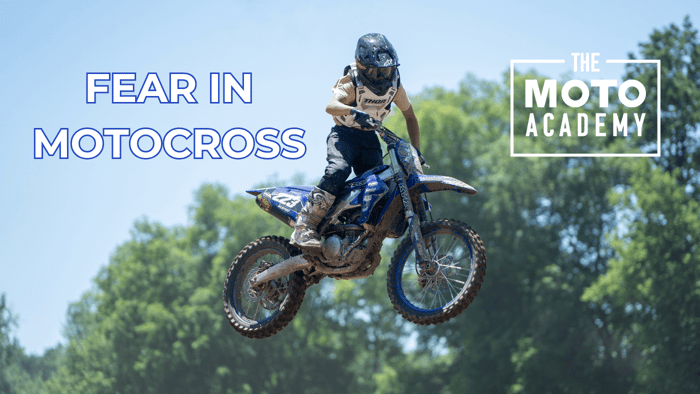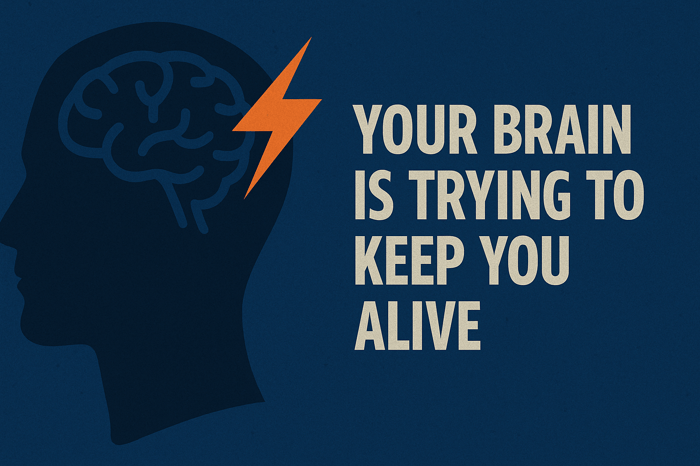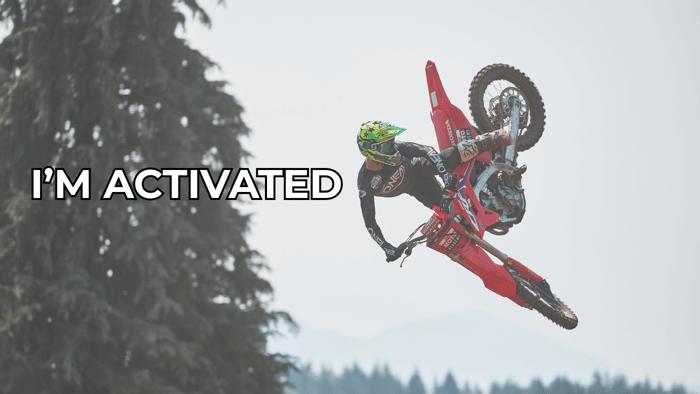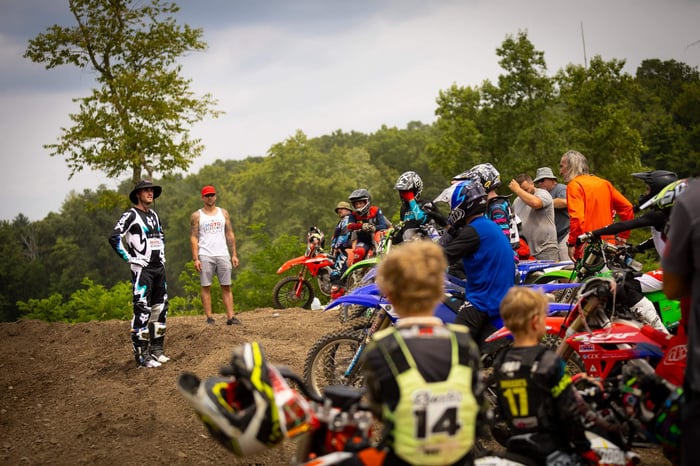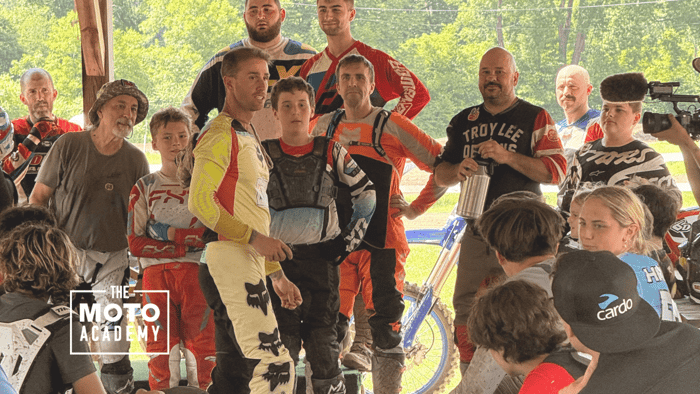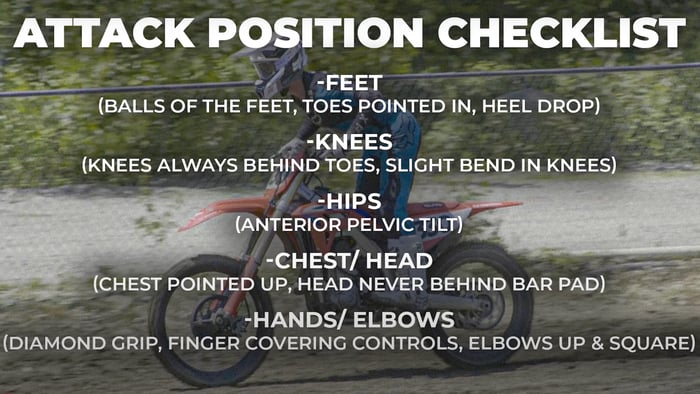“Nerves mean you care. If you weren’t nervous, I’d be worried.” —AJ Catanzaro”
There’s a moment that every motocross rider knows intimately. It happens right before you drop into the track. Your gear is on. Your goggles are fogged slightly from breath. Your heart pounds with a strange blend of anticipation and nerves. You’ve done this a hundred times. Maybe a thousand. But still—there it is.
Fear.
Not the kind of fear that stops you in your tracks. Not the kind of fear that tells you to go home. But the kind that hums in your chest, whispering: This matters. Pay attention.
And if you’ve ever wondered why that feeling never truly disappears—no matter how long you’ve been riding—you’re not alone. In fact, that lingering edge of fear is one of the most misunderstood gifts in motocross.
This blog post is about understanding fear—not as something to conquer, but as something to partner with. Something that, when used properly, keeps you alive, sharp, and evolving—not just as a rider, but as a human being.
The Neuroscience of Fear: Your Brain Is Trying to Keep You Alive
Let’s start with the facts. Fear isn’t a flaw. It’s biology.
When you approach something high-risk—like a 70-foot jump, a slick off-camber rut, or simply riding faster than you’ve ever gone—your amygdala, the brain’s fear center, lights up like a warning flare. It signals your hypothalamus, which activates your sympathetic nervous system—a chain reaction we know as “fight or flight.”
- Your pupils dilate
- Your heart races
- Adrenaline floods your body
- Blood flow redirects to your core
You are not weak. You are awakening.
But here's what most riders miss: this isn’t panic. It’s priming.
Your body is preparing to perform at a higher level. Your brain is sharpening attention. Your senses are tuning. This is the nervous system’s way of saying, “We’re about to do something important. Get ready.”
Now, imagine if that system didn’t activate.
Imagine walking into a track you’ve never ridden, with features you’ve never seen, and feeling nothing. No caution. No alertness. Just a deadened sense of invincibility.
You wouldn’t be fast. You’d be reckless.
AJ Catanzaro’s Perspective: Fear is Fuel
AJ Catanzaro—pro racer and founder of The Moto Academy—has said something in dozens of classes that sticks with riders long after the gate drops:
“If you think I’m not nervous before every Supercross main event, you’re wrong. I just don’t resist it anymore.”
This shift—from resisting fear to working with it—is foundational.
Fear, when understood, becomes fuel. It sharpens reaction time. It anchors presence. It forces preparation. Fear makes you deliberate.
AJ teaches riders that the goal isn’t to eliminate fear, but to recognize it as part of the flow state.
Because here’s what’s wild — the very moment your palms sweat and your heart pounds, you’re standing at a crossroads in your nervous system.
If you panic, your brain stays stuck in high-beta — a chaotic state marked by stress, overthinking, and scattered attention. This is where fear hijacks your focus. You ride tight. You make mistakes. You try to think your way through what should be instinctive.
But if you stay calm — not by ignoring fear, but by breathing through it, naming it, and staying present — something incredible can happen.
Your brain begins to shift. The storm quiet's. Electrical activity in your mind moves from frantic high-beta into alpha — the rhythm of calm readiness. Some riders even dip into theta, the frequency of deep flow, intuition, and fast learning.
These are the same brainwaves elite athletes, artists, and special forces operatives exhibit during peak performance.
And here’s the catch:
You don’t reach these states despite fear. You reach them through fear — by staying conscious and composed as your nervous system activates.
That’s the difference between a rider who survives the track… and one who evolves on it.
These are the brainwaves associated with flow, intuition, and high-performance learning.
You don’t reach these states despite fear. You reach them through fear—by training your body to remain present as the nervous system activates.
Dr. Joe Dispenza and Rewriting Your Inner Dialogue
Neuroscientist and mindset leader Dr. Joe Dispenza teaches that most of us live in a subconscious loop—replaying past emotions and experiences until they become our identity. Fear, in this context, is often misunderstood because we attach meaning to it:
- “I’m scared, so I must not be good enough.”
- “I’m nervous, so maybe I shouldn’t ride today.”
- “I’m uncomfortable, so I’ll back off.”
But Dr. Dispenza invites us to ask a deeper question: Is this fear rooted in the present, or in a memory?
When you get on the bike and feel fear, it might not be about what’s in front of you—it might be echoing an old crash, an old doubt, an old story you haven’t rewritten yet.
And that’s where your power is.
When you feel fear, you don’t have to believe it. You just have to listen, breathe, and decide.
Practical Riding Advice: How to Train With Fear, Not Against It
So how do you actually use fear to get better on the bike?
Here are a few practical tools we teach at The Moto Academy:
1. Name It, Don’t Shame It
Instead of pretending you’re not nervous, call it what it is: activation. Say it out loud if you have to. “Okay—I’m activated. My body’s preparing. That’s a good thing.”
Riders who suppress fear tend to ride tight. Riders who accept fear loosen up.
2. Use Breath as a Reset
Fear tightens the chest and shortens the breath. To counteract that, use a technique we call the 3-2-1 reset before you ride:
- Inhale through your nose for 3 seconds
- Hold for 2 seconds
- Exhale slowly for 1 long breath
Repeat until your breath is smooth and you’re back in control. This signals the parasympathetic nervous system and helps you ride more fluidly.
3. Rehearse the Unknown
Fear thrives in the unknown. That’s why we use visualization before every jump section, rut corner, or sketchy track feature.
Before your wheels hit the dirt, see the line. Feel the throttle. Hear the RPM. Your brain doesn’t know the difference between real and imagined reps—it just learns.
4. Make Peace With Plateaus
Sometimes fear shows up not because something is dangerous—but because you’re leveling up. You're about to ride faster, brake later, or finally try that double.
The fear here isn’t a warning. It’s an invitation.
5. Ask the Right Questions
This is something AJ emphasizes in nearly every class—and it might be the most important skill of all: learn to pause and ask yourself the right questions when fear shows up.
Too many riders feel fear and just try to “push through it” or ignore it. But that usually leads to tension, hesitation, or unsafe choices. Instead, ask:
- Where is this fear coming from?
- Is it a memory of a past crash or mistake?
- Is this something I’ve actually prepared for?
- Am I afraid because it’s dangerous—or because it’s new?
Asking these kinds of questions helps you recognize the root of the fear. Sometimes it’s a real, calculated concern—like “I haven’t practiced this skill yet” or “My bike setup feels off.” That’s fear doing its job: keeping you safe.
But often, fear is just a leftover imprint from an old experience. A past fall. A moment where you weren’t confident. And if that’s the case—if it’s irrational fear—you can begin to release it, not by pretending it’s gone, but by riding through it with awareness.
The best riders don’t ignore fear. They investigate it. And the moment you do that, you gain the power to respond with clarity instead of reaction. That’s the beginning of trust—not just in your bike, but in yourself.
The Best Riders Aren’t Fearless—They’re Intimate With Fear
Motocross is not a sport for the numb or the indifferent. It demands everything from you—your attention, your courage, your willingness to be uncomfortable.
And fear will always ride with you. That’s not a problem. That’s the point.
Fear is the quiet co-pilot whispering, “You’re alive. Stay sharp. Be here now.”
The most evolved riders—those who not only progress but last—aren’t the ones who get rid of fear. They’re the ones who turn toward it, study it, and become friends with it.
Final Thought: You’re Not Broken—You’re Becoming
If no one has told you this yet, let me be the first:
You’re not broken for feeling fear.
You’re becoming the kind of rider who feels everything—and rides anyway.
Fear will ride shotgun. It’s your job to stay behind the bars, breathe, and trust yourself to move forward.
And when you do, you’ll realize what all great riders know deep down:
The fear never fully goes away.
And that’s exactly what makes the ride so powerful.
Want More Tools to Manage Your Mindset?
Unlock 30 days free inside The Moto Academy App using code TMAFAM — where you’ll find mindset training, coaching moments, and deep-dive Moto Theory that turns nerves into breakthroughs.
→ Explore the App and Start Your Journey


